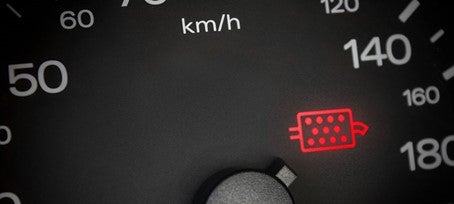DPF regeneration: this standard driving style can cause problems

DPFs or diesel particulate filters reduce soot emissions by 80%. If it gets the opportunity to regenerate, that is. A stop/start driving style may hinder DPF regeneration, though—read why.
With the introduction of the ‘Euro 5’ standard in 2009, DPFs or diesel particulate filters became mandatory in diesel vehicles.
Their effect is profound: DPFs typically reduce emissions of diesel particulates by 80%.
How does a DPF work?
A diesel particulate filter catches soot particles in the exhaust. Like any filter, it needs to be cleaned from time to time—or it loses effectiveness.
A DPF cleans itself, and this is called DPF regeneration. The result is that the collected soot is burnt off at a high temperature, with only minimal ash remaining.
What’s needed for DPF regeneration?
High exhaust temperatures are needed to burn the soot. These are usually reached when driving on motorways or fast A-road runs. This is called passive regeneration.
But not all cars get this sort of use. That’s why DPFs are equipped for active regeneration: when the soot accumulating in the filter reaches more or less than 45%, a car ‘forces’ higher exhaust temperatures. This will empty the filter, provided that the journey is not too short.
Why does DPF regeneration fail?
When cars in urban environments do not reach high speeds and are mainly used for short journeys, regeneration may fail.
This is not a good thing. Extra fuel injected into the cylinders for active regeneration will not burn and will drain into the sump—with decreased oil quality and an increased oil level as a result, causing possible damage and even destruction of the engine.
The 3 stages of failed regeneration (and how to fix it in each stage)
Problematic failed regeneration can reach three stages. Unsurprisingly, it becomes harder to fix at each stage.
Stage 1: The DPF warning light goes on. This happens when regeneration cannot complete.
How to fix it: In most cases, the driver can fix the incomplete regeneration by driving for 10 minutes at 65 km/h (about 40 mph) or faster.
Stage 2: If the driver ignores the warning light, he can expect other warning lights to appear when the soot accumulating reaches 75 %.
How to fix it: At this point, he will need to take the car to a dealer or workshop to undergo ‘forced’ regeneration.
Stage 3: If the car is not taken to a mechanic, soot loading will continue to rise until above 85% soot loading, and even forced regeneration can no longer be performed.
How to fix it: in this stage, the DPF will need removing to be cleaned or, in the worst case, replaced.
Other causes for incomplete DPF regeneration
It’s possible that although a car is used at higher speeds and for longer journeys, there is still a problem with DPF regeneration.
Here are some other possible causes:
- Wrong oil type. DPF equipped cars require low ash, low sulphur engine oils;
- Incomplete combustion caused by problems with the inlet, fuel or Exhaust Gas Recirculation (EGR) system;
- A warning light on or a diagnostic trouble code logged in the engine management system;
- A low fuel level (less than ¼ tank);
- Exceeded service interval;
- Low or empty Eolys additive tank (if present).
Wrapping up: if your customer has repeated problems with their DPF, the first step is to check whether their driving behaviour allows for complete DPF regeneration.
If it does, it’s time to examine possible other causes.
Summary;
- DPFs are designed to reduce soot emissions by 80 %.
- They need to empty themselves—this is called regeneration.
- A town-based, stop-start driving style may hinder this regeneration.
- A DPF warning light is a sign to take a 10-minute drive at a higher speed so the DPF can regenerate.